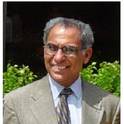Under Phase II of a NASA Research Award contract, a prototype nickel segmented-involute-foil regenerator was microfabricated via LiGA and tested in the NASA/Sunpower oscillating-flow test rig. The resulting figure-of-merit was about twice that of the approx.90% porosity random-fiber material currently used in the small 50-100 W Stirling engines recently manufactured for NASA. That work was reported at the 2007 International Energy Conversion Engineering Conference in St. Louis, was also published as a NASA report, NASA/TM-2007-2149731, and has been more completely described in a recent NASA Contractor Report, NASA/CR-2007-2150062. Under a scaled-back version of the original Phase III plan, a new nickel segmentedinvolute- foil regenerator was microfabricated and has been tested in a Sunpower Frequency-Test-Bed (FTB) Stirling convertor. Testing in the FTB convertor produced about the same efficiency as testing with the original random-fiber regenerator. But the high thermal conductivity of the prototype nickel regenerator was responsible for a significant performance degradation. An efficiency improvement (by a 1.04 factor, according to computer predictions) could have been achieved if the regenerator been made from a low-conductivity material. Also the FTB convertor was not reoptimized to take full advantage of the microfabricated regenerator's low flow resistance; thus the efficiency would likely have been even higher had the FTB been completely reoptimized. This report discusses the regenerator microfabrication process, testing of the regenerator in the Stirling FTB convertor, and the supporting analysis. Results of the pre-test computational fluid dynamics (CFD) modeling of the effects of the regenerator-test-configuration diffusers (located at each end of the regenerator) is included. The report also includes recommendations for accomplishing further development of involute-foil regenerators from a higher-temperature material than nickel.
Available at: http://works.bepress.com/mounir_ibrahim/43/

Paper AIAA 2008-5716 presented at the 6th International Energy Conversion Engineering Conference (IECEC), Cleveland, Ohio, July 28 - 30, 2008.